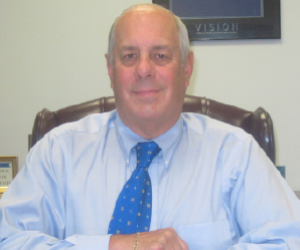The Sewanhaka Central High School Board of Education unanimously approved a referendum for a bond for up to $99.5 million in capital improvements at district schools at a special meeting on Tuesday night.
The proposed bond, which will be put to a public vote on Dec. 4, calls for renovations at all five district high school buildings, including technology and security upgrades, and upgrades to all athletic fields in the district.
“One of the key components of this proposal is to address health and safety issues to include roofs that are leaking, windows that we can’t see out of and HVAC systems that are necessary to insure our students have the proper percentage of fresh air flowing in and out of the classrooms,” Sewanhaka Superintendent of Schools Ralph Ferrie said.
Ferrie said that if approved he expected the project to take place over several years.
“Realistically, this is probably a four-year project,” Ferrie said.
Ferrie said the proposed project calls for $14.37 million in work at New Hyde Park Memorial High School, including $1.9 million for roof reconstruction, $2.98 million for new synthetic turf soccer and baseball fields with bleachers, $1.4 million for a turf field inside the running track, $2 million for heating and ventilation, and approximately $1.86 million to refurbish the auditorium and install air conditioning in it.
Floral Park Memorial is set to receive $20.8 million, including $14 million for a new auditorium and $1.5 million install a running track and regrade the athletic fields.
Ferrie said Sewanhaka High School, built in 1929, is budgeted at $31.1 million including $18 million for a new cafeteria and gym addition.
“Elmont, New Hyde Park, Frank Carey were all built around the same time, all built with similar architectural plans and they all have very similar needs,” Ferrie said.
The proposed bond also calls for $15.8 million of work at Elmont Memorial High School, including $4.5 million for an additional gymnasium, and $14.9 million of work at H. Frank Carey High School. Every high school would be equipped with new synthetic turf athletic fields.
Ferrie said the average annual tax levy increase across the entire district resulting from the bond will be $144.26 per household with the increase phased in over the next three to four years.
Richard Tortora of Great Neck-based Capital Markets Advisors, which is serving as financial consultants for Sewanhaka, said the $99.5 million bond would be issued in three increments over three years, so residents would only pay approximately $50 per household in additional taxes for the first few years.
After that residents would pay the $144 for the lifetime of the bond, which Tortora estimates to be 20 years.
“You’re making one payment on your tax bill but it’s going to pay off three different bonds, and that payment for the next 20 years averages out to be about $144 for residential homeowners in the district,” Tortura said.
A substantial portion of the renovation work would be reimbursed through building aid the district receives annually from the state.
“We’re projecting 40 percent of this will be covered through state assistance,” Ferrie said.
Ferrie said there will be three mailings to the community in the coming months before the Dec. 4 vote.
“We want all of the public to be fully educated in terms of what’s in the proposal so they can make a very educated decision on their vote,” he said.
He also said that there is information about the bond proposition on the school district Web site and dates for building tours for residents will be posted as well.
Asked how the $99.5 million bond proposition grew from the original Weidersum Associates Architects’ estimates of $78.1 million, Ferrie said, “It was always a fluid process. Some wanted to see it higher but the board brought it back to just put in projects that meet the needs of the district.”
Sewanhaka board President David Fowler said there were renovations added to the original estimate to address needs at all buildings.
“In a 2 percent tax cap world, we’re not going to get capital works projects done very easily,” Fowler said.



